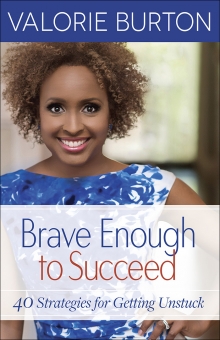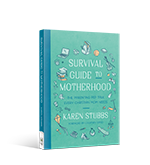
Sign Up for Updates
Connect
TOPICS
- Latest Blog
- Fiction
- Inspirational/Devotional
- Men's Christian Living
- Prophecy
- Women's Christian Living
- View All
ARCHIVES
5 Steps to Break Through Your Uncertainty
Posted on Nov 07, 2017 Topic : Women's Christian Living
Posted by : Valorie Burton

Amanda finally saw all of her dreams on the verge of becoming true. In the past two years she’d gotten married, become guardian to her eight-year-old niece, and now she and her husband were expecting. What’s more, a big break was on the horizon in her career—an opportunity she had dreamed of and worked toward for more than ten years! All she needed to do was deliver a presentation to the board.
But while she normally breezed through such projects, this time she seemed to be at a loss and even felt a knot in the pit of her stomach. She didn’t feel nearly as excited as she should. What on earth was going on?
Amanda’s reaction didn’t match up with the seemingly positive event that just happened. When your response is incongruent to a stressor, challenge, or opportunity, it is possible you’ve bumped into an iceberg.
You have deeply held beliefs—core values—that shape your thoughts and actions. Often, these beliefs are so ingrained that you are not even conscious of how strongly they influence your behavior. When these beliefs collide, decisions that seem like they should be easy will become inexplicably difficult.
Getting clear about your iceberg requires you to ask yourself questions that dig beneath the surface. Here’s how to do it:
1. Identify where you are stuck. Make your answer one succinct sentence—a factual rather than an emotional description of the problem.
2. Clarify the core issue that has you stuck. What are the conflicting emotions that tell you you’re stuck? For Amanda, the answer might be, “I feel like I should be excited, but instead I feel guilty.”
3. Ask a question to peel back the layer and get to “why.” Ask, “Why is that?” We could ask Amanda, “What exactly has you feeling guilty and excited?”
4. Drill down with questions until you get to an iceberg. An iceberg is your belief or thought about how things should be. Ask, “What does that mean? What’s most upsetting about that?”
5. Choose whether to hold on to your iceberg or melt it. Once you discover an iceberg belief, ask yourself, “Is this helping me or hurting me in this situation?”
As Amanda went through this process, she unearthed two deeply held but conflicting beliefs: First, a woman should do all she can to maximize her professional and financial potential. Second, moms who are truly committed step out of the workforce when they have children. With a child on the way, these two icebergs collided.
Prayerfully, she modified her iceberg beliefs to these: “When I work, I will work with excellence and take advantage of only those opportunities I sense God leading me to. My professional life must work around my family life.” She made the decision to assist with the launch of the new project and talked to her company about a modified work-from-home schedule after her baby.
Becoming aware of your thoughts and beliefs, especially conflicting ones, is essential to understanding why you may be stuck and a key to intentional thinking. Your thoughts create your reality.

Read more in Brave Enough to Succeed by Valorie Burton

